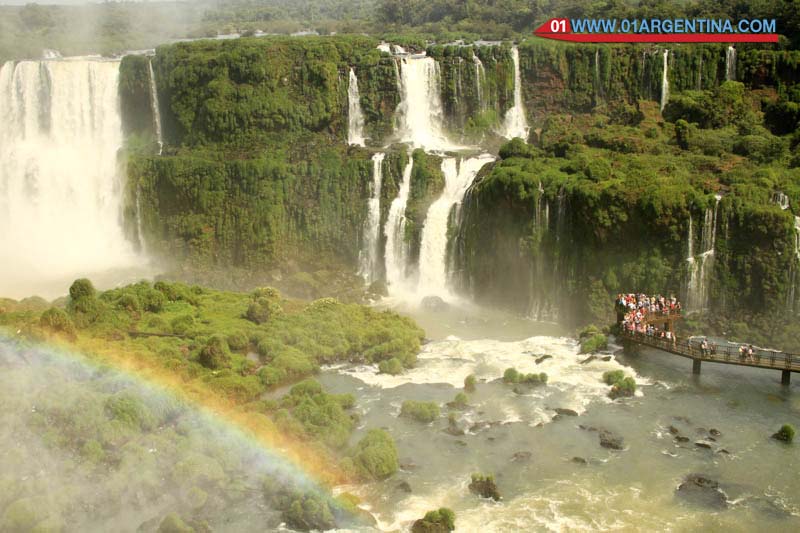
It is “only” a river (albeit with a surprising water flow) moving through the jungle in the border area between Argentina and Brazil. When encountering a natural fracture rocky soil in a relatively flat area one of the most impressive natural spectacles in the world is produced, and a few years ago included as one of the seven natural wonders of the world.
It is not “a ‘cataract is a complete horizon of cascades and waterfalls (275 in total) in an area of hundreds of meters into the jungle, some of them 80 meters high and emitting a sound that more than a river looks like a sea falling (in normal flow about 1500 cubic meters of water per second) through obstacles between rocks and vegetation.
The waterfall has the shape of a letter “J” inverted and extended. Some jumps are spaced in a sector other throat that resembles a giant funnel. Here trembles for water flow and sound. They are known as Iguazu Falls, and to see them in all its dimensions, must organize the visit by the two countries (Argentina and Brazil) in their respective national parks on the border on which sits wonder. In Argentina the park is within the province of Misiones, and in Brazil in the Brazilian state of Parana.
How to organize the visit to Argentina and Brazil
When planning my recent visit to the Iguazu Falls, the first thing that appear are doubts about a lot of issues: border (the falls are on the borderline between two countries, Argentina and Brazil, and therefore must be organized to see them from both sides), the crosses of the same border, the duration of the visit on each side and corresponding National Parks, where to stay, how to plan the day, etc.
From all this, and all these doubts is a response this post: something like a guidance to plan a visit to one of the natural wonders on the planet.
Then I’ll disaggregating the form of questions common questions (from the basics) arising to visit and the responses by my experiences.
Is it advisable to visit the falls only from one of the countries (Argentina and Brazil)?
It is not advisable. First because it costs nothing to plan at least two days in falls and cross the border to see the falls from both sides. Second, visit the falls from both sides and from each country will help you understand the dimension of this wonder, and to see it from all angles. From the side Brazil some of the best views obtained (physically cataracts are mostly from the Argentine side, but can be seen as if it were from an audience from Brazil side).
On the other hand, from the Argentine side you can “live” the Iguazu Waterfalls, walking as many trails that go above the waterfalls, sail boats with waterfalls, or get viewpoints points cringe in the edge of the Devil’s Throat. I was able to visit and see no matter who of the two countries, but the visit would not be complete if we do not both sides.
What airport is convenient to arrive and in what city to stay (Argentina and Brazil)?
On the Argentine side is the city of Puerto Iguazu, in the province of Misiones. On the side Brazil Foz do Iguacu, in the state of Parana. Both cities are almost on the border and along the Iguazu River, connected by a bridge and a path about ten minutes (to which must be added the time at border controls).
More than a term of convenience, which must be analyzed is the point from which went to visit the falls. For example, if we plan a flight from any city in Brazil, we will be more convenient in terms of time and cost to fly directly to the airport of Foz do Iguacu. However if we are in Buenos Aires, Argentina or in another city, we will be more convenient in terms of time and cost to fly to the airport of Puerto Iguazu.
Both cities, Argentina or Brazil’s, are widely prepared for tourism and near national parks, although Foz do Iguacu is a larger city. Anyway, that side is almost indistinct stay as it is very easy to move from side to side and visit the parks, and both cities have a full range of hotels of all categories available.








